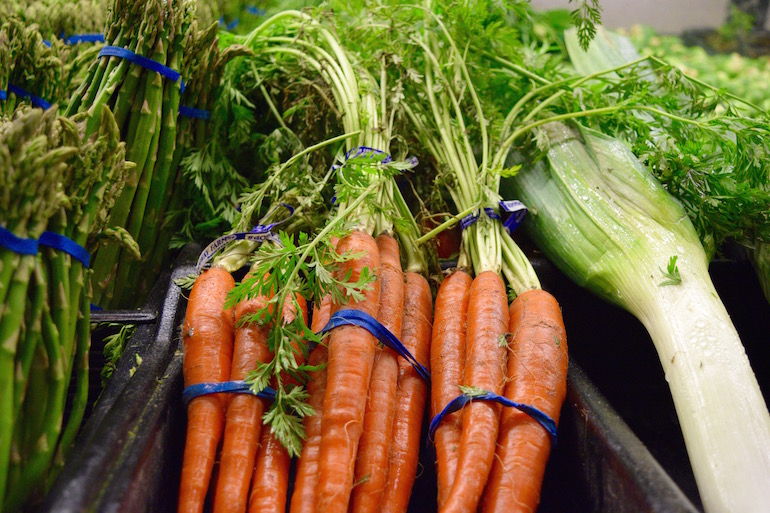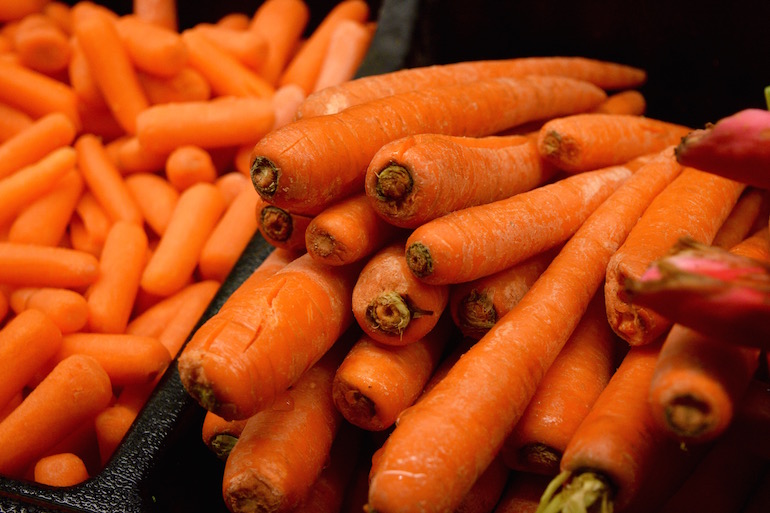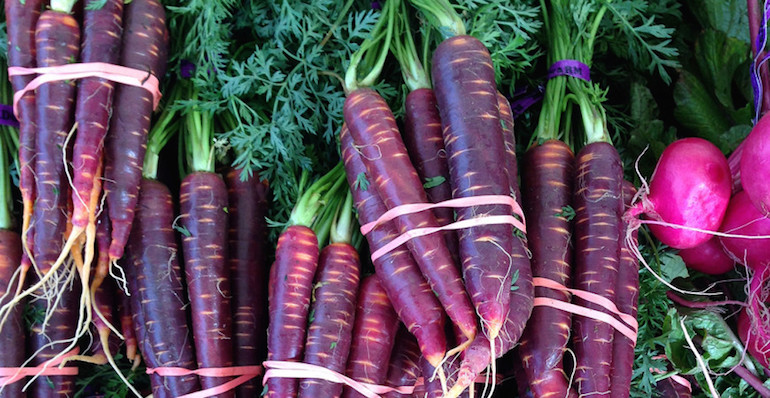Meet the Carrot:
Carrots are a daily staple on many dinner tables around the globe. Most of us have been exposed to them all the way back to baby days when mom forced the mashed up Gerber sweet carrots into our mouths with rubber spoons. And I’m sure no one could ever forget that smell. Don’t we owe it to carrots to learn a little bit more about them? I mean, they’ve been with us since the very beginning.
An Unexplainable Past:
Food historians explain that the carrot’s history is somewhat obscure because it is so hard to pin down where and when domestication actually took place. The history surrounding carrots makes it nearly impossible to explain how, over a thousand years, it transformed from a small, tough, bitter, and spindly vegetable to a sweet, fleshy, pigmented, and unbranched edible root. Historians also wonder why it took SO LONG for the modern cultivated, edible carrot to appear. But nevertheless, it did. And all I can say is thank goodness! Because imagine a world without carrot cake.
Another thing that makes the carrot’s history hard to decipher is the fact that carrots and parsnips were initially interchangeable. They were both referred to as pastinaca and because of this, historians are unable to identify the exact time period people were introduced to carrots.

Photo by Linzie Gienau
Cultivated Carrots Versus Wild Carrots:
Both cultivated and wild carrots coexist today. A wild carrot is the progenitor (wild ancestor) of the domestic carrot (direct descender). Both types belong to the family Daucus Carota.
There are two types of cultivated carrots:
- Eastern/Asiatic Carrots: These carrots have purple or yellow roots and their leaves tend to be a green or grey color. They can be found in Afghanistan, Russia, Iran, and India.
- Western or Carotene Carrots: This type of carrot has orange, red or white roots. They, more than likely, derived from the first group and originated in Turkey.
The other type, a wild carrot, has edible leaves and thin, white roots. This carrot dates back almost 10,000 years ago to Europe and parts of Asia. The roots of wild carrots were not originally used. Instead, their seeds would be used for medicinal purposes.

Photo by Linzie Gienau
How Carrots Got on Our Plates:
The original home of the carrot was Iran and Afghanistan. From there, carrot seeds spread to Arabian, African, and Asian lands were they were widely accepted and eventually crossbred.
This vegetable was very popular in Ancient Egypt. It was very common for carrots to be placed in the tombs of Pharaohs. In addition, drawings of the carrot harvest and processing could be found in hieroglyph paintings. And supposedly, the most popular carrot in Ancient Egypt was purple.

Photo Courtesy of vibrantly.com
During the 13th century, carrots traveled from Persia to Asia, eventually reaching distant Japan. At the same time, European countries began cultivating carrots in France and Germany.
Then around 1609, English settlers brought today’s carrot to the New World and began cultivating them in Jamestown, Virginia.
From the United States, they spread to South America, with Brazil being the first South American country to receive them. And shortly after, Australia jumped on the bandwagon too.
And so carrots were being grown all around the world. Today they are still being grown in gardens throughout the world. Clearly the carrot is something to appreciate.

